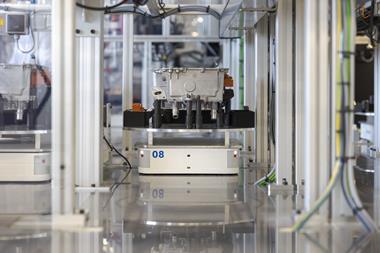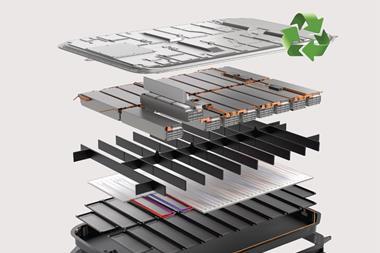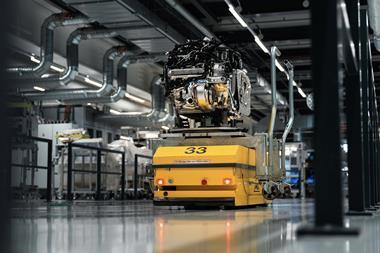The region's vehicle market is healing, but plant closures have not prevented excess production capacity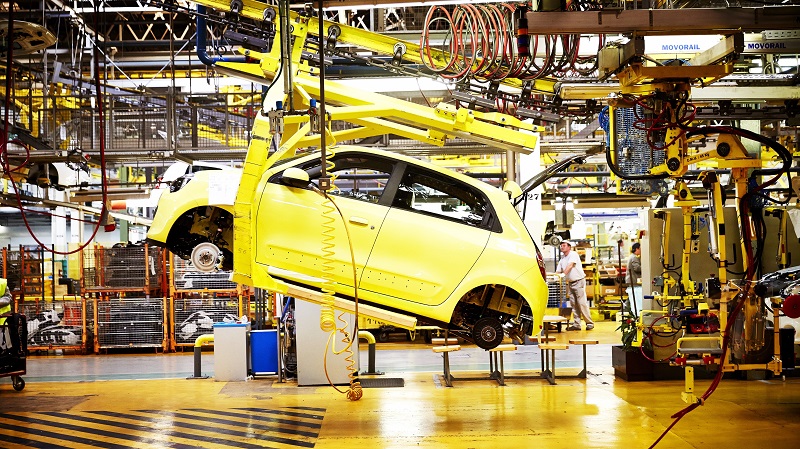
European automakers will be breathing a cautious sigh of relief after 2014 showed sustained growth there following the prolonged slump triggered by the 2008/9 financial collapse. All 12 months showed growth in the region (excluding Russia for this article), according to figures from the European Automobile Manufacturers Association.
Sales of cars reached 12.9m, up 5% from 2013. At the time of writing, production totals had not been collated, but based on positive growth reported for individual countries, the region is expected to be up on the 14.6m for 2013. Analysts IHS Automotive are forecasting sales to continue to rise this year and in subsequent years as economies such as Spain return to health. The company expects European figures to reach 13m in 2015, rising to 14m by 2017, giving hope to makers still struggling to fill spare capacity in under-performing factories across the region.
However, right now the situation is still dire, according to analyst LMC Automotive. “The average capacity [utilisation] is 65%, but you need to be 75% to break even,” says Justin Cox, head of automotive production at LMC. “Manufacturers are still not getting to grips with the problem.” The German premium brands, along with a resurgent Jaguar Land Rover (JLR) in the UK, are running at full steam, but their success is squeezing the mass-market players (a term that becomes increasingly out-of-date as Audi, BMW and Mercedes muscle past makers like Citroën in sales). Cox compares Europe unfavourably to North America, where drastic capacity reduction contained the disaster following the financial crisis. Newly lean operations there are now contributing to healthy profits for the ‘big three’ makers. “They did it through painful plant closures; here we’ve had a more socialist way of dealing with it, keeping facilities open because of political sensibilities and tinkering with them,” he says.
Plant closures
There have been a handful of high-profile closures in the past 18 months. PSA Peugeot-Citroën shuttered its Aulnay-sous-Bois plant, near Paris, in October 2013 when the last Citroën C3 rolled off the line. In July the same year, Ford stopped production at its Transit van plant in Southampton, UK, while December 2014 saw the last Ford drive out of its factory in Genk, Belgium, which shut with the loss of around 4,000 jobs. Ford’s streamlining programme in Europe was first announced in 2012, when the OEM said it planned to reduce capacity by 355,000 units and make savings of between $450-500m (£266-333m) in the region, reduce headcount by around 5,700 salaried employees in a cutback that also included closing a stamping and tooling facility at its Dagenham plant in east London, UK.

However, according to analysis by Bernstein Research, the combined closures have only removed around 1m units of capacity from European factories. “The industry is just sitting tight hoping for a brighter future,” Bernstein analyst Max Warburton said in a report published late last year.
Some makers are confident about the situation. Carlos Ghosn, head of Renault-Nissan, Europe’s second largest carmaker after the VW Group (with Russia included), said at the Paris motor show last October that too much is made of overcapacity. “It depends where you see the European market – if you see the market staying where it is today, then you have a big problem; if you see the market recuperating and coming back to the level where it was in 2007, which means at least 20-25% growth, then the problem of capacity is less dramatic.” However, LMC predicts that by 2020 capacity levels will still only be around 75-80% with over a third of car factories still operating below that. “In the US they’re at 90-95% at the top of cycle, about where you’d want to be,” says Cox.
Reshuffling the pack
Instead, the makers have been rearranging their operations. To the ire of French unions, Peugeot-Citroën has been cutting production lines at its Mulhouse, eastern France plant; Rennes in western France; and Poissy, near Paris, is expected to follow suit this year. According to Bernstein, PSA’s plants have seen a steep decline in productivity, with unit per employee falling between 2007 and 2013 in most of its plants, including Rennes and Mulhouse. By contrast, according to Bernstein, the success of VW Group has also seen improved or steady productivity at its 12 European plants over the same period. The plant reshuffling has seen makers move models about, switching between country or continent, or teaming up with rivals to make rebadged or redesigned versions of the same van or car on the same production line to a greater extent than previously seen.
“The average capacity [utilisation] is 65%, but you need to be 75% to break even" – Justin Cox, LMC Automotive
Tne country that has benefited from the reshuffle is Spain, something Cox attributes to the country’s large underemployed pool of labour, its modern infrastructure, integrated supply base and established logistics. It is also cheap. “Essentially, Spain is a proven and trusted auto manufacturing location without the North European cost base,” he states. Production in the country in the first half of 2014 rose 12% to 1.3m cars and commercial vehicles (CV), putting it second behind Germany in the region.

Meanwhile Peugeot-Citroën’s Villaverde factory in Madrid, which used to make the old Peugeot 207 B-segment hatchback, was saved from potential closure by the introduction of the radical new Citroën Cactus, a kind of pared-back SUV sitting in the C-segment. With its novel ‘airbumps’ on the sides, the car was Citroën’s third-biggest seller in Europe based on December sales and looks set to easily match the brand’s expectation of 85,000 sales and so secure the future of Villaverde’s remaining 1,600 workers, down from 2,700 in 2012.
The partnership between PSA and Opel, still unsettled, is on course to produce two B-segment people-carriers for Peugeot and Opel at the latter’s Zaragoza plant in northern Spain in 2016. Meanwhile, Peugeot will build a larger C-segment crossover for both brands at its Sochaux plant, eastern France, likely from 2017. This tactic of filling factories with other brands was used successfully by VW at Seat’s then-struggling Martorell plant in Barcelona, which now also produces Audi’s Q3. Seat’s own revival on the back of the new Leon C-segment hatch, with sales up 57% in 2014, has put that facility on a more comfortable footing.
Renault is doing the same with its Sandouville plant in Normandy, north-west France. Making the ageing and increasingly unpopular Espace D-segment people-carrier and the Laguna D-segment range, production at the plant had fallen to 25,000 in 2013. The factory was refitted at a cost of €230m to manufacture light vans, and along with the Renault Trafic, versions of Opel Vivaro and the Nissan NV300, it will also make a new Fiat van from 2016 on the same platform. Renault said in September last year that total volume would be 100,000 a year. The OEM will also help boost capacity of its Flins plant, north-west of Paris, by bringing in production of Nissan’s new B-segment Micra from 2016, the current version of which is now made in India.
Repatriating production
This tactic of repatriating models currently made outside Europe has become more common as makers look to fill excess capacity. Also taking this route has been Opel, which has installed its successful Mokka B-segment SUV to its Zaragoza plant in Spain from GM’s south Korea plant, where launch models were made. Meanwhile, Hyundai now makes its i10 A-segment hatch at its plant in Izmit, Turkey, instead of India and will also build all versions of the new i20 B-segment hatch. Currently, right-hand-drive cars are made in India as well. Turkey has benefited from vehicle-makers’ desire to cut costs in western Europe, with Ford shifting production from its shuttered UK Transit factory to its plant in Turkey; it now makes the smaller Transit Courier there as well. Toyota produces a new Corolla C-segment car there, while Fiat has said it will build the replacement for its Bravo C-segment vehicle at the company’s Tofas joint venture in the country in 2016.
Fiat is another OEM desperately trying to stem losses and re-fill factories left almost idle by the downturn in southern Europe, again by thinking creatively about the models it brings into its factories. The strategy looks to be working. Through its ownership of Chrysler, the renamed Fiat Chrysler Automobiles (FCA) group has added the well-received Jeep Renegade B-segment SUV to Fiat’s Melfi plant in southern Italy, and will start making the related Fiat 500X SUV there later this year. In January, the company said it would add 1,500 jobs to the site in spring 2015, bringing good news to a plant that has been laid low by poor sales of the Punto B-segment hatch.
In Turin in the north, the giant and underutilised Mirafiori factory is slowly being turned into a production site for the FCA premium models, including the Maserati Levante large SUV due this year following Fiat’s pledge to investment €1 billion into the plant. Also on their way to the factory will be Alfa Romeo models under the brand’s promised revival, including an SUV based on the Levante. Cox at LMC believes that Fiat’s premium-based revival plan is far from assured: “If you were cautious, you’d say Fiat group are at risk for the medium term”.
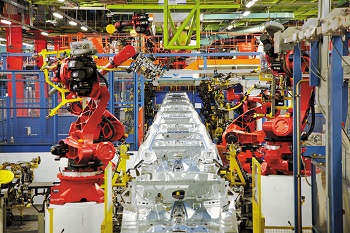
Despite the investment into Italy, Fiat is still very focused on eastern Europe, like many automakers. Along with its Serbian plant making the 500L B-segment people-carrier, Fiat builds its best-selling 500 A-segment car in Poland at Tychy, and local reports suggest that it will also build a Punto replacement there from 2016, as a replacement for Ford’s Ka (the new version of which is likely to be made in India).
With less history and fewer political restrictions than in the west, companies are thriving in the region. PSA’s plant in Trnava, Slovakia, building the C3 Picasso B-segment people-carrier and Peugeot 208 B-segment hatch is the company’s most productive plant in Europe according to research by Bernstein, which puts the figure at more than 60 units per employee, compared with below ten for some French plants.
Mercedes is investing more in its Hungary factory at Kecskemet, adding another model to its A-class based C-segment small car line-up there. Meanwhile, Renault is poised to reap its €450m (£337m) investment into its Novo Mesto plant in Slovenia, which has begun making the new, more premium-angled Renault Twingo A-segment hatch as well as the four-door version of Daimler’s new Smart, which shares a platform. Sales in December were up 24% for the Twingo, which has been well received by the media and in sales terms could challenge the leading Fiat 500 and VW up! (both also built in eastern Europe; in fact, the Opel Adam and the two-seat Smart ForTwo are the only A-segment cars sold in the region that are built in western Europe).
Makers might be shuffling models around plants, but they are also shifting more production overseas. European dominance in worldwide production is shifting as more markets grow. This is borne out by the figures. According to ACEA, Europe’s share of global production was 22% in 2013, down from 26% in 2010; 34% in 2005; and a huge 39% in 2000. A combination of the old adage ‘build where you sell’ and pressure from local taxation to do so is seeing more makers setting up plants elsewhere, even the premium makers, which are less driven by cost concerns. Recent examples include JLR, which has started making the Range Rover Evoque in China, taking some production out of its Halewood plant in north-west England. The company has also announced that it will open a factory in Brazil from 2016.

It is not just the premiums, though. Ford now makes 99% of the vehicles it sells in Russia within the country, and plans to add the Fiesta there next year. Honda decided against building its new HR-V B-segment SUV for Europe at its underutilised factory in Swindon, UK, in favour of importing it from Mexico. But production for Europe is largely going to remain in the region, and in the face of lower volumes and political pressure to keep plants open, makers are having to get clever to staunch the financial bleeding, by partnering with other makers and persuading unions to become ever more flexible. What is pretty certain is that the days of greenfield plant building is over. Says Cox at LMC: “A new factory in western Europe is unlikely. We’ve 30m units of capacity and that’s too much”.
Heavy truck production in Europe has largely stabilised again following the mad rush to buy trucks at the end of 2013 ahead of the shift to Euro6 emissions, which increased the price of vehicles. The scale of the rush was revealed in ACEA figures for November 2014, which recorded sales of heavy trucks (over 16 tonnes) as falling 20% from the year before. According to Zita Zigan, director of global commercial vehicle forecasting for analysts LMC Automotive, the result was that the truck industry had to cut production and lay off staff. “These pull-forwards are always followed by paybacks,” she tells AMS.
It is difficult to ascertain whether the truck business has overcapacity, Zigan says, mainly because the business is so much less automated. “Reducing and expanding capacity is mostly down to hiring and firing,” she notes. LMC expects production to rise next year after falling around 10% this year, but not to reach 2013 levels. Europe was the third-largest CV manufacturer overall in 2013 behind the US and China, but its truck and bus brands dominate the world over. With medium and heavy trucks taken into account, Daimler was the largest producer in 2014 globally at around 400,000, according to estimates from IHS Automotive. After Chinese maker Dongfeng, Volvo Group is number three, with Volkswagen Truck and Bus (including Scania and MAN) in fourth place.
Aside from Iveco’s closure of its northern European plants late 2012, the factory footprint in the region has remained stable. According to LMC, around 25-30% of Europe’s heavy truck output are exported, mainly as kits to assembly sites around the world. In terms of global sales for medium and heavy trucks, China is by far the biggest market ahead of the US and is dominated by local producers. There is no sign yet of any Chinese maker looking to sell or build in Europe. Zigan explains: “Chinese vehicle have a long way to go in terms of quality that European truck buyers would expect”.
























